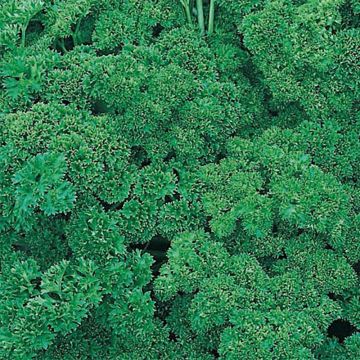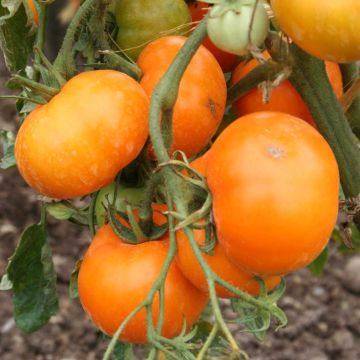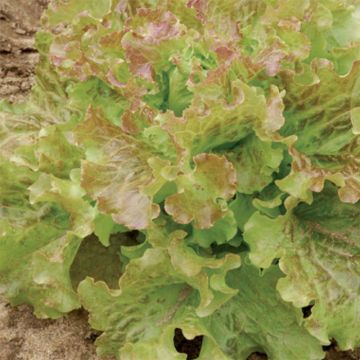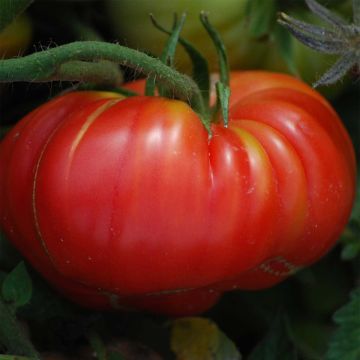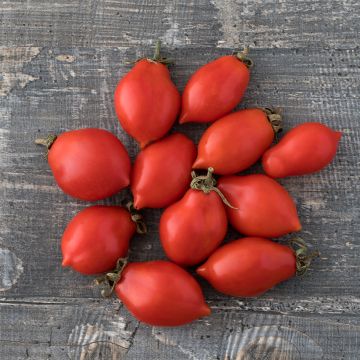

Campanula rapunculus - Rampion


Campanula rapunculus - Rampion
Campanula rapunculus - Rampion
Campanula rapunculus
Rampion Bellflower, Rampion, Rover Bellflower
Plant arrived in a fragile state. Planted in the ground under a bell jar, I hope it will start growing again?!
Guillaume, 30/03/2022
This item cannot be shipped to the selected country
Delivery charge from €5.90
Delivery charge from €5.90
More information
Schedule delivery date,
and select date in basket
This plant carries a 6 months recovery warranty
More information
We guarantee the quality of our plants for a full growing cycle, and will replace at our expense any plant that fails to recover under normal climatic and planting conditions.
From €5.90 for pickup delivery and €6.90 for home delivery
Express home delivery from €8.90.
From €5.90 for pickup delivery and €6.90 for home delivery
Express home delivery from €8.90.
Description
The Rampion (Campanula rapunculus) is a small Campanula that is easy to grow and is part of the ancient and forgotten vegetables. It is also called Wild Radish, Jacob's Staff, or Saint James's Staff. The entire plant is edible: leaves, flowers, and roots. Very hardy, it can be grown in both vegetable and ornamental gardens. Planting can be done in spring or autumn.
The Rampion belongs to the family of Campanulas, which grow spontaneously in meadows or along paths. The leaves and roots of the Rampion were commonly consumed in previous centuries, especially in the Middle Ages.
Its upright stems offer beautiful bell-shaped, blue-purple flowers from May to September. With deciduous foliage, this biennial plant will reach a height of about 40 cm (16in). Both decorative and edible, it can be grown in both the vegetable garden and the ornamental garden.
In terms of cuisine, the entire plant is edible. The leaves can be raw in salads, mixed with vegetables, or cooked like spinach. They have a slight nutty taste. The roots, with their white and crunchy flesh, can be eaten raw with salt, grated, mixed with raw vegetables, or cooked in stews. As for the edible flowers, they will add a decorative touch to your dishes.
Harvesting: As needed, the roots are harvested in winter, from November to March. The leaves are preferably harvested between April and September.
Storage: The leaves should be consumed quickly to enjoy their flavour fully. The roots can remain in the ground during winter and be harvested as needed.
Gardener's tip: To keep the soil moist in summer and protect it from the cold in winter, we recommend mulching the soil with thin successive layers of grass clippings, preferably mixed with dead leaves. This protection, which keeps the soil moist, also reduces weed growth.
Report an error about the product description
Campanula rapunculus - Rampion in pictures
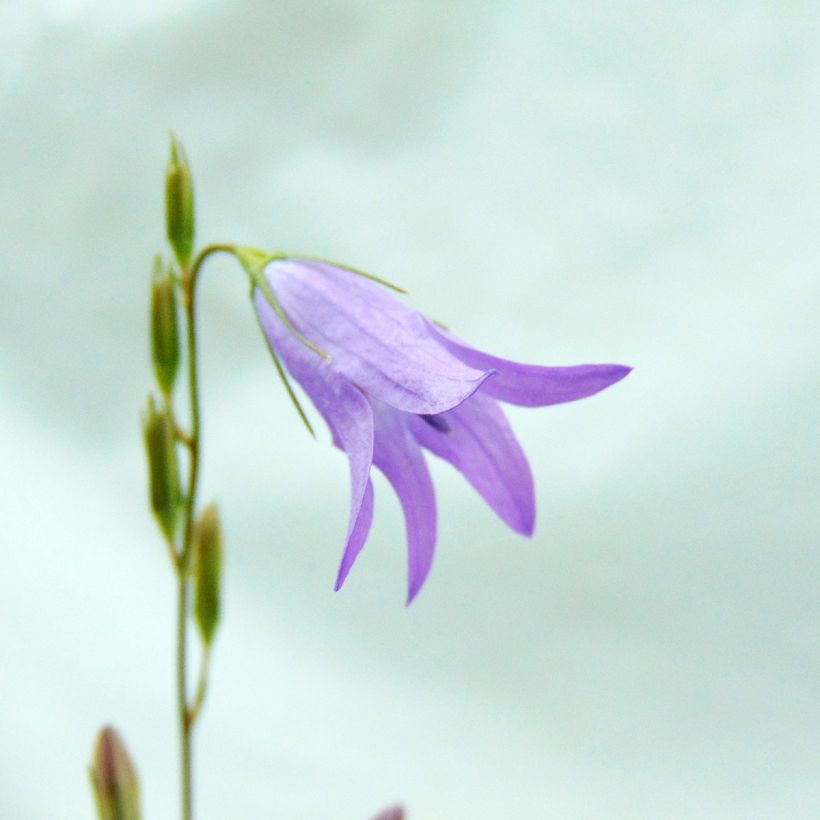



Harvest
Plant habit
Foliage
Other Herbs A to Z
Planting and care
The Rapunzel plant enjoys sunny or semi-shady exposures. It thrives in cool, well-drained, loose soils with a tendency towards limestone. Planting can be done in spring, from March to June, or in autumn, from September to November.
Space the young plants 30 cm (12in) apart. Dig a hole (3 times the volume of the root ball), place the root ball and cover with fine soil. Firmly pack and water to keep the soil moist.
During cultivation, water regularly. The Rapunzel plant easily self-seeds. If you want to promote root growth, cut the floral stalks.
Cultivation
Care
Intended location
-
, onOrder confirmed
Reply from on Promesse de fleurs
Old and forgotten vegetables
Haven't found what you were looking for?
Hardiness is the lowest winter temperature a plant can endure without suffering serious damage or even dying. However, hardiness is affected by location (a sheltered area, such as a patio), protection (winter cover) and soil type (hardiness is improved by well-drained soil).

Photo Sharing Terms & Conditions
In order to encourage gardeners to interact and share their experiences, Promesse de fleurs offers various media enabling content to be uploaded onto its Site - in particular via the ‘Photo sharing’ module.
The User agrees to refrain from:
- Posting any content that is illegal, prejudicial, insulting, racist, inciteful to hatred, revisionist, contrary to public decency, that infringes on privacy or on the privacy rights of third parties, in particular the publicity rights of persons and goods, intellectual property rights, or the right to privacy.
- Submitting content on behalf of a third party;
- Impersonate the identity of a third party and/or publish any personal information about a third party;
In general, the User undertakes to refrain from any unethical behaviour.
All Content (in particular text, comments, files, images, photos, videos, creative works, etc.), which may be subject to property or intellectual property rights, image or other private rights, shall remain the property of the User, subject to the limited rights granted by the terms of the licence granted by Promesse de fleurs as stated below. Users are at liberty to publish or not to publish such Content on the Site, notably via the ‘Photo Sharing’ facility, and accept that this Content shall be made public and freely accessible, notably on the Internet.
Users further acknowledge, undertake to have ,and guarantee that they hold all necessary rights and permissions to publish such material on the Site, in particular with regard to the legislation in force pertaining to any privacy, property, intellectual property, image, or contractual rights, or rights of any other nature. By publishing such Content on the Site, Users acknowledge accepting full liability as publishers of the Content within the meaning of the law, and grant Promesse de fleurs, free of charge, an inclusive, worldwide licence for the said Content for the entire duration of its publication, including all reproduction, representation, up/downloading, displaying, performing, transmission, and storage rights.
Users also grant permission for their name to be linked to the Content and accept that this link may not always be made available.
By engaging in posting material, Users consent to their Content becoming automatically accessible on the Internet, in particular on other sites and/or blogs and/or web pages of the Promesse de fleurs site, including in particular social pages and the Promesse de fleurs catalogue.
Users may secure the removal of entrusted content free of charge by issuing a simple request via our contact form.
The flowering period indicated on our website applies to countries and regions located in USDA zone 8 (France, the United Kingdom, Ireland, the Netherlands, etc.)
It will vary according to where you live:
- In zones 9 to 10 (Italy, Spain, Greece, etc.), flowering will occur about 2 to 4 weeks earlier.
- In zones 6 to 7 (Germany, Poland, Slovenia, and lower mountainous regions), flowering will be delayed by 2 to 3 weeks.
- In zone 5 (Central Europe, Scandinavia), blooming will be delayed by 3 to 5 weeks.
In temperate climates, pruning of spring-flowering shrubs (forsythia, spireas, etc.) should be done just after flowering.
Pruning of summer-flowering shrubs (Indian Lilac, Perovskia, etc.) can be done in winter or spring.
In cold regions as well as with frost-sensitive plants, avoid pruning too early when severe frosts may still occur.
The planting period indicated on our website applies to countries and regions located in USDA zone 8 (France, United Kingdom, Ireland, Netherlands).
It will vary according to where you live:
- In Mediterranean zones (Marseille, Madrid, Milan, etc.), autumn and winter are the best planting periods.
- In continental zones (Strasbourg, Munich, Vienna, etc.), delay planting by 2 to 3 weeks in spring and bring it forward by 2 to 4 weeks in autumn.
- In mountainous regions (the Alps, Pyrenees, Carpathians, etc.), it is best to plant in late spring (May-June) or late summer (August-September).
The harvesting period indicated on our website applies to countries and regions in USDA zone 8 (France, England, Ireland, the Netherlands).
In colder areas (Scandinavia, Poland, Austria...) fruit and vegetable harvests are likely to be delayed by 3-4 weeks.
In warmer areas (Italy, Spain, Greece, etc.), harvesting will probably take place earlier, depending on weather conditions.
The sowing periods indicated on our website apply to countries and regions within USDA Zone 8 (France, UK, Ireland, Netherlands).
In colder areas (Scandinavia, Poland, Austria...), delay any outdoor sowing by 3-4 weeks, or sow under glass.
In warmer climes (Italy, Spain, Greece, etc.), bring outdoor sowing forward by a few weeks.







































